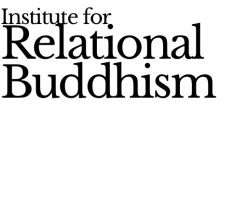Can there be a Buddhist psychotherapy?
Having contemplated this question for a few decades as a psychotherapist of Buddhist descent, my answer is “no”, as there is no Buddhist equivalent terms for psychotherapy or for its methodological basis: psychology. However, there are many crucial concepts which are connected to mind (nama), like cognition (citta), hypermentation (papanca) and intentional action (karma) which are foundational to psychology/psychotherapy. Hence, I can say “yes”. Consider: (1) the 3-Poisons: ignorance on mind’s functioning resulting in the irrationalities of greed (including fear of loss and sadness of loss) and hatred (including anger/other-blame and depression/self-blame) which are prime targets in psychotherapy, (2) the skandhas or psychological modalities (rupa-nama/body-mind/speech, vedana/sensing-feeling, samjna/thinking-emoting, samskara/intending-acting, and vijnana/consciousness-awareness), and (3) the central place alluded to suffering in the 4-Ennobling Realities and the 8-Fold Balancing Practice (attuning views, intentions, speech, action, living, effort, awareness and attention) to stop psychological malaise.
The Buddha seems to allude to psychology when stating: “In this one fathom-long living body with perceptions and thoughts lays the world, the arising and cessation of the world” (Rohitassa Sutta). He also endorsed “ennobling friendship” (kalyanamitra), which parallels the therapist’s collaborative practice, in pursuing his Middle Way. Buddhist guidance takes place in the framework of Body/Speech/Mind (kaya/vak/citta) which goes significantly beyond the Cartesian mind-body paradigm. This implies a relational perspective that is keen on the mindfulness of karmic speech whenever targeting views, living and efforts in the framework of eventually transforming karmic intention and action. Calling himself kammavadin, one may assume that the Buddha’s main practice was transforming karma, implying that he dealt with changing action and motivation (hetu). For Buddhist Psychotherapy to be, a call is made to strip karma from metaphysical meanings.
The Buddha, who made great strides at transforming feelings, could be qualified as the first psychotherapist ever. This thesis is corroborated by the Buddha’s 3-Empirical Marks of Existence: (1) there is psychological suffering due to birth, aging, illness, death, separation from loved ones, union with unloved ones and (social) failure, (2) such misery is a consequence of emotional craving, cognitive grasping and behavioural clinging to permanence while the nature of existence is impermanence (anitya) and (3) because everything is ever changing and no-thing remains the same, things lack inherent existence and could be called empty (or “ontologically mute”, K.J Gergen); this includes the self (anatman). The Buddha’s teaching of not-self is the first and foremost, and only one in the world. Because not-self, and the self for that matter, is quintessential to psychological treatment, Psychotherapy by Karma Transformation might hopefully belong to mainstream psychotherapy. Rigorous training is required.
Psychotherapy by Karma Transformation
There are plenty misunderstandings about karma whose conceptualization in non-Buddhist quarters carries the flavour of fate or destiny due to cause-and-effect. This usually boils down to: “good deeds lead to heaven, an after-life paradise, and bad deeds lead to hell in the beyond”. The Buddha allocated from his awakening point-of-view a specific this-worldly/here-now meaning of karma, a term borrowed from Brahmanism, as intentional action that is subject to choice. From a Buddhist perspective heaven-hell are metaphors for joy-anger, while good-evil only exist as non-foundational qualities which are basically empty. I submit that the Buddha was an “analyst”/vibhajjavadin (Subha Sutta) whose transforming dialogues were meant to change intention/kamma, motivation/hetu and performance/kiriya.
In order to contribute to the daily psychological “rebirths” of wholesome emotional episodes, the Buddha’s tactics of transforming kamma can be summarized in a centrepiece called Karma Sequence which is a combination of the modalities/khandhas and the 3-Poisons: (1) awareness of sensory perception (seeing, hearing, touching, smelling, tasting and viewing through the mind’s eye) felt as positive, negative or neutral, (2) awareness of ir/rational cognitions due to ignorance on mind’s functioning and projecting like fabricating illusory selves and delusional gods, (3) awareness of un/wholesome intentional cognitions which inhere in the motivational factors of action, (4) awareness of self-sabotaging thoughts which reflect the proclivity of dysfunctional craving (musts/shoulds), greedy grasping (fear-of-loss and grief-of-loss) and hateful clinging (aggression/other-hate and depression/self-hate) and (5) awareness by mindfulness unveiling the interactive Dependent Origination of Body/Speech/Mind which incorporate karmic antecedents and consequents leading to balanced interactivity. In effect, Karma Transformation starts with an unwanted emotional state and works at changing unwholesome/akusala perception, cognition and behaviour with regard to an external or internal activating event by choosing for wholesome/kusala perception, cognition and behaviour to alter affect.
Thus, the karma of drama, distress and agony is transformed into the karma of contentment. This is illustrated by a case example detailing the construction of wholesome karma as rational cognitions and functional behaviours. Karmic sequences run parallel to the centrepiece used in Cognitive-Behaviour Therapy which implies that the two methodologies of change overlap considerably. Indeed, one of the founding fathers of CBT, the legendary Albert Ellis, noted that these disciplines bear more commonalities than differences, particularly by abolishing “most of the human ego” (Kwee & Ellis, 1998). Psychotherapy, also if Buddhist, operates in the realm of the “provisional self”; hence therapy logistically precedes meditation towards “ultimate no(t)-self”. At bottom: only when calmed down, free from emotional quagmires and horror vacuum, is one ready to shift toward emptiness and Buddhahood. However, the latter is optional.
You can find great online help at Better Help. You can find professional psychologists here

